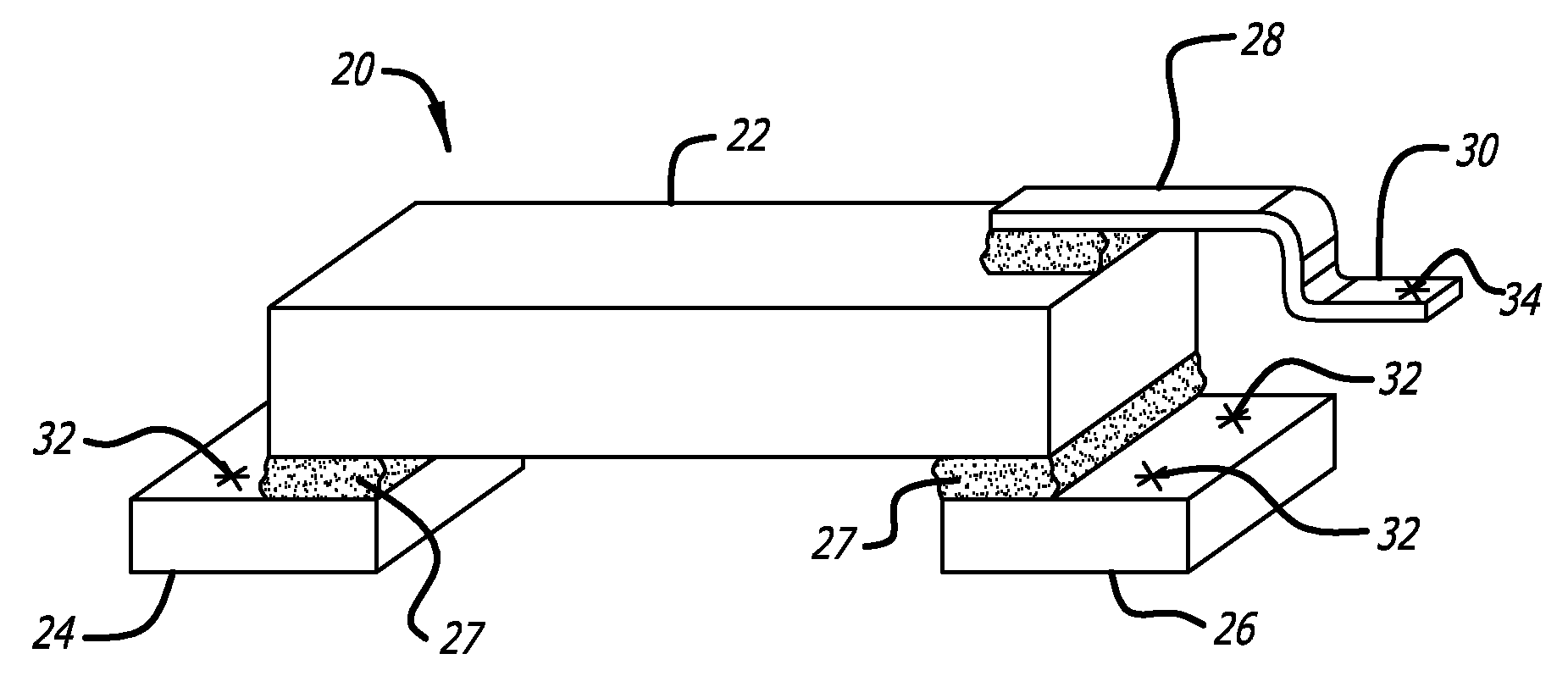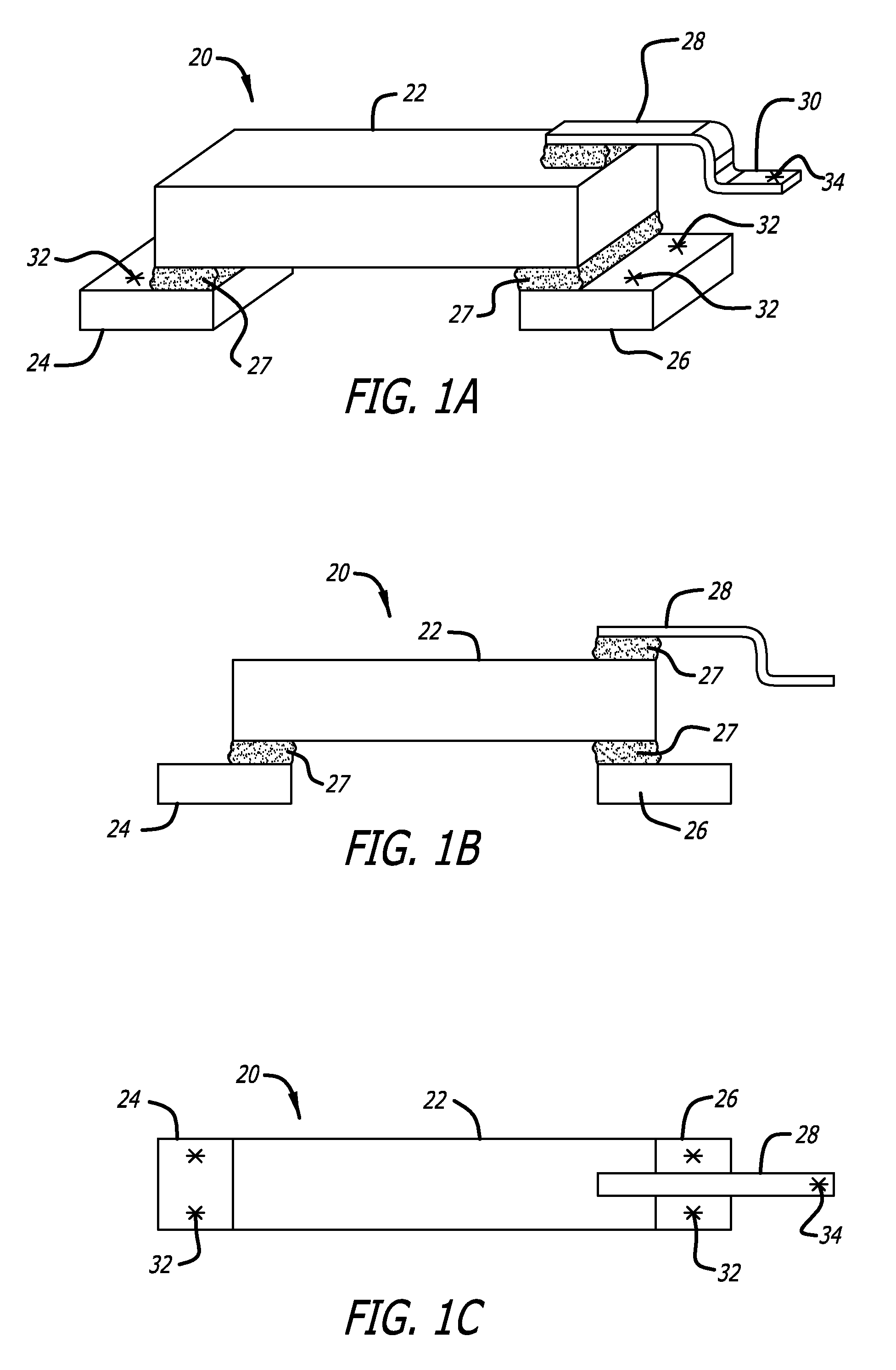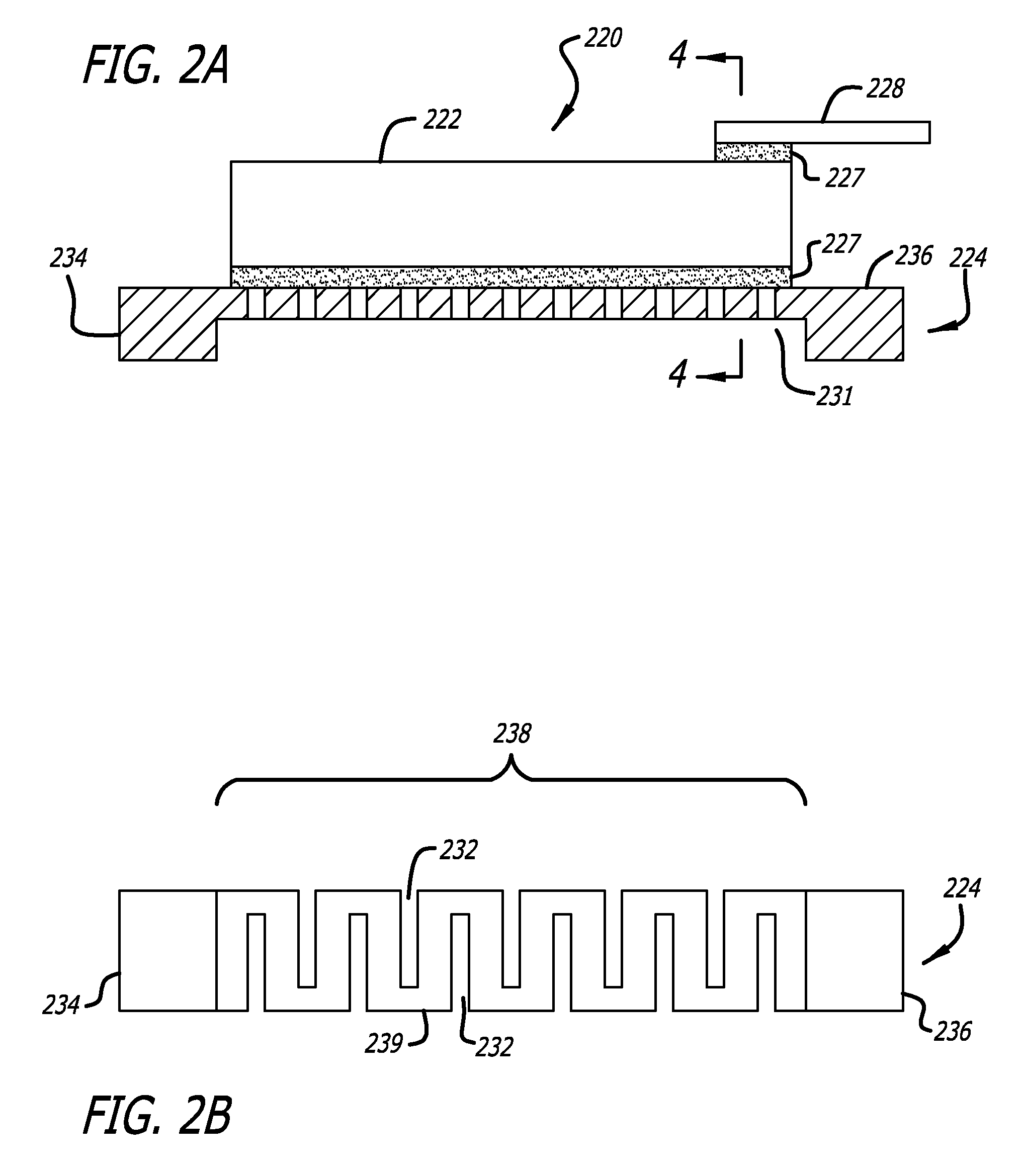Wireless Microactuator Motor Assembly for Use in a Hard Disk Drive Suspension, and Mechanical and Electrical Connections Thereto
a micro-actuator and suspension technology, applied in piezoelectric/electrostrictive transducers, instruments, record information storage, etc., can solve the problems of increasing the difficulty of motor and servo control system to quickly and accurately, the resolution and bandwidth of conventional actuator motors, such as voice coil motors (vcm), lacks sufficient bandwidth and resolution to effectively accommodate high-density disks, and adds a significant cost component to the finished suspension assembly. , to achieve the effect o
- Summary
- Abstract
- Description
- Claims
- Application Information
AI Technical Summary
Benefits of technology
Problems solved by technology
Method used
Image
Examples
first embodiment
[0038]FIG. 1A is a side perspective view of a microactuator assembly according to the invention. First base 24 and second base 26 are affixed to the bottom surface of PZT element 22, the bottom surface being a negative electrode of PZT element 22. Bases 24 and 26 can be affixed to bottom of PZT element 22 using conductive adhesive 27 such as conductive epoxy, or by other methods as will be discussed later. Bases 24 and 26 are formed of a conductive material which is stainless steel that is preferably thin enough for laser welding, such as sheet stainless steel material. Bases 22 and 24 will be welded at weld locations 32. A top lead 28 made of a stainless steel sheet material, and thus generally flat and planar in shape, is attached to the top surface of PZT element 22 which is the positive electrode of PZT element 22. Top lead 28 has two bends formed in it, thereby forming a lead tab 30 which will be welded at weld location 34. In this embodiment bases 24 and 26 are separate compon...
second embodiment
[0042]FIG. 2A is a side elevation view of a microactuator assembly according to the invention. In this embodiment, the two bases 234 and 236 located at opposite ends of PZT element 222 are fabricated out of a single unitary piece of material that defines a unitary base 224. A gap 231 is formed between bases 234 and 236 such as by chemical etching or laser etching. Unitary base 224 is affixed to the bottom surface which is the negative electrode of PZT element 222 by polyimide 227 which will be described in detail later with respect to FIG. 4. Similarly, top lead 228 is affixed to the top surface which is the positive electrode of PZT element 222 by polyimide 227.
[0043]FIG. 2B is a bottom plan view of the unitary base 224 of the microactuator assembly FIG. 2A. An expandable bridging section or connecting section 238 connects first base 234 to second base 236, thus rendering the PZT negative lead expandable between the two loci at which it is attached to the PZT. Expandable bridging s...
third embodiment
[0044]FIG. 3 is a side elevation view of a microactuator assembly according to the invention. In this embodiment, the feature in unitary base 324 that allows the base to expand is a series of accordion like folds 326. Alternatively, the expandable bridging section 238 could have corrugations in it that allow it to expand. Conductive adhesive 327 is used to affix the unitary base 324 and top lead 328 to PZT element 322.
[0045]FIG. 4 is a side cutaway view of the microactuator assembly of FIG. 2A taken along section line 4-4, showing details of the various materials that may be used to mechanically and electrically attach leads 228 and 224 to PZT element 222. PZT element 222 is first coated on both surfaces with a sputtered metal layer 240 such as nickel (Ni) or chromium (Cr). Next, a highly conductive layer 241 such as sputtered gold (Ag) or titanium (Ti) is applied. This renders the surface of PZT element 222 highly conductive so that charge from the associated lead is applied across...
PUM
| Property | Measurement | Unit |
|---|---|---|
| driving voltage | aaaaa | aaaaa |
| conductive | aaaaa | aaaaa |
| flexible | aaaaa | aaaaa |
Abstract
Description
Claims
Application Information
 Login to View More
Login to View More - R&D
- Intellectual Property
- Life Sciences
- Materials
- Tech Scout
- Unparalleled Data Quality
- Higher Quality Content
- 60% Fewer Hallucinations
Browse by: Latest US Patents, China's latest patents, Technical Efficacy Thesaurus, Application Domain, Technology Topic, Popular Technical Reports.
© 2025 PatSnap. All rights reserved.Legal|Privacy policy|Modern Slavery Act Transparency Statement|Sitemap|About US| Contact US: help@patsnap.com



